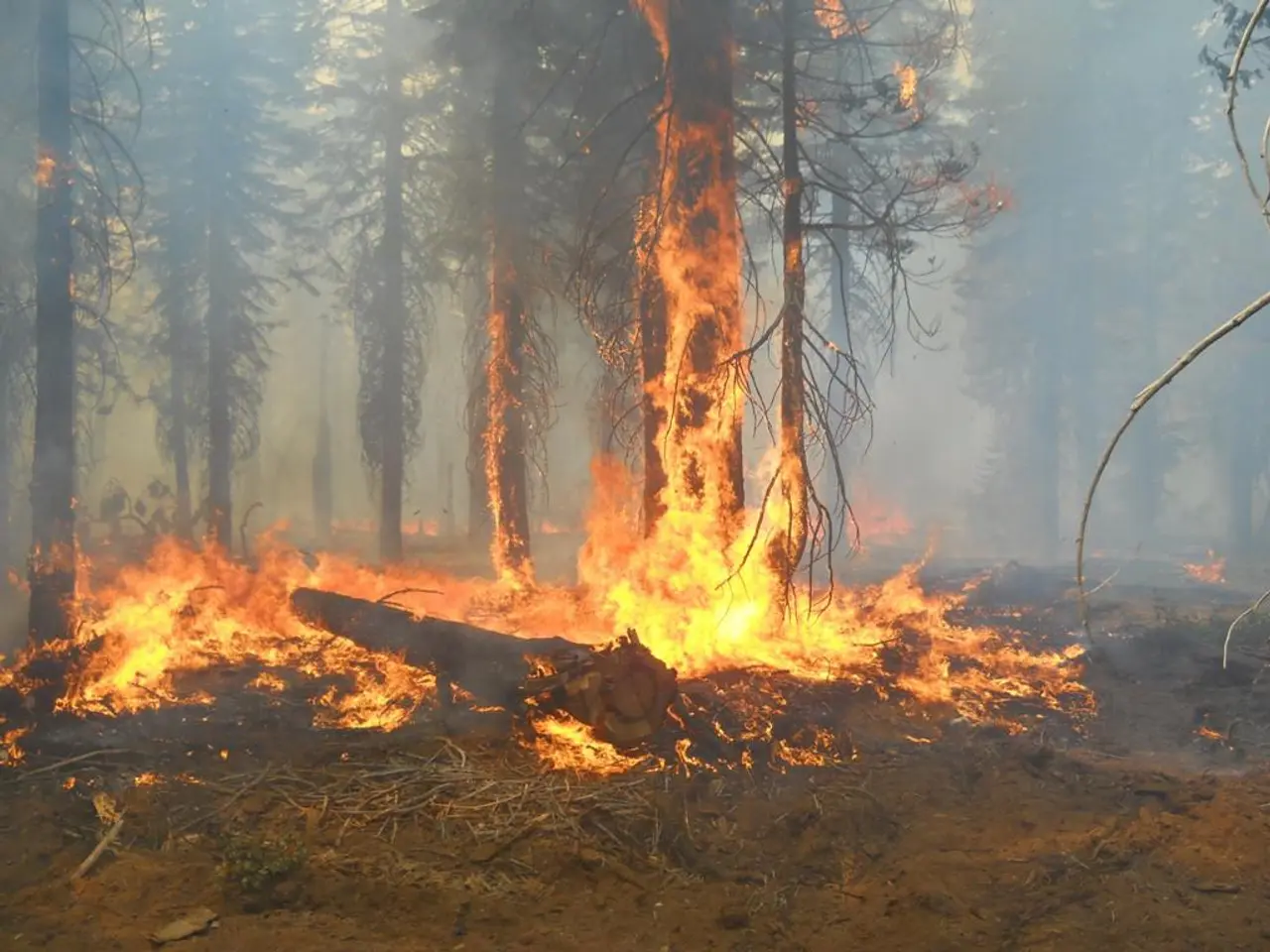Highest flood damage risk warning issued for Bavaria by environmental aids - Bavaria's environmental aids face the zenith of flood destruction risk in the region
In a bid to combat the increasing risk of floods, Bavaria is focusing on nature-based solutions to manage flood risks effectively. According to recent reports, around 4.25% of Bavaria's territory is classified as a flood risk area, with North Rhine-Westphalia, Brandenburg, and Saxony-Anhalt reporting higher values nationwide. However, it's important to note that several hundred more exceptions in the districts of Straubing-Bogen and Deggendorf in Bavaria could not be individually researched.
The proposed measures for Bavaria primarily involve forest and landscape management strategies. These interventions aim to work with the natural processes of Bavarian landscapes to reduce flood damage risk holistically, promoting ecosystem health and biodiversity alongside climate adaptation and disaster risk reduction.
Forest–water interactions are a key focus area. By improving forest health and management, it's possible to contribute to flood risk mitigation by stabilizing soils, increasing water infiltration, and regulating water flow during heavy rainfall events. Preventive forestry measures also complement flood protection, such as establishing fire breaks and ensuring sufficient water availability for forest protection.
Peatland rewetting and restoration are suggested for improving flood control from extreme rainfall events. Rewetting peatlands restores their natural sponge-like function, retaining water and releasing it slowly, which can mitigate flood peaks downstream.
Small flood reservoirs and green infrastructure are considered for dual benefits in drought and flood protection, integrating natural and engineered solutions to manage water more sustainably.
Bavaria already has a program that provides measures for resettlement for flood protection, which can help in renaturating areas and preventing building damage. However, it's important to note that the Free State of Bavaria can only provide information on communal flash flood risk management, not on sponge city or flood protection measures.
The Environmental Aid has called on Bavaria and other federal states to better support communities in preparing for floods, especially in light of the increasing risk of hundred-year floods. The flood disaster in the Ahr Valley in 2021 highlighted the dangers of the climate crisis and the increased risk of extreme weather events and frequent occurrences of hundred-year floods.
DUH Federal Managing Director Sascha Müller-Kraenner advocates for focusing more on nature-based flood protection instead of technical measures like dikes or walls. Rivers and streams in Bavaria need more space, and water should be retained in forests, meadows, and wetlands for effective flood protection.
In conclusion, the nature-based flood protection measures proposed for Bavaria focus on leveraging forests, peatlands, and landscape-scale water retention strategies to reduce flood risk by strengthening natural hydrological regulation and resilience against climate change impacts. These measures align with broader European initiatives supporting biodiversity and habitat restoration to enhance environmental resilience. The Environmental Aid has identified areas where there is still a need for improvement in preventive measures taken regarding flood events in the past ten years.
- Recognizing the importance of climate adaptation and disaster risk reduction, vocational training programs focusing on environmental science, climate-change, weather, and weather-forecasting could provide Bavaria's workforce with the necessary skills to effectively manage and mitigate flood risks, in line with the region's focus on nature-based solutions.
- As part of the holistic approach to flood risk management in Bavaria, vocational training in ecological restoration and ecosystem management could play a crucial role in implementing measures such as peatland rewetting and forest–water interactions, which are key to improving flood control from extreme rainfall events.
- In the pursuit of sustainably managing water resources for drought and flood protection, vocational training in the design and maintenance of small flood reservoirs and green infrastructure could contribute significantly to Bavaria's dual objectives of flood risk reduction and environmental resilience, aligning with European initiatives supporting biodiversity and habitat restoration.








